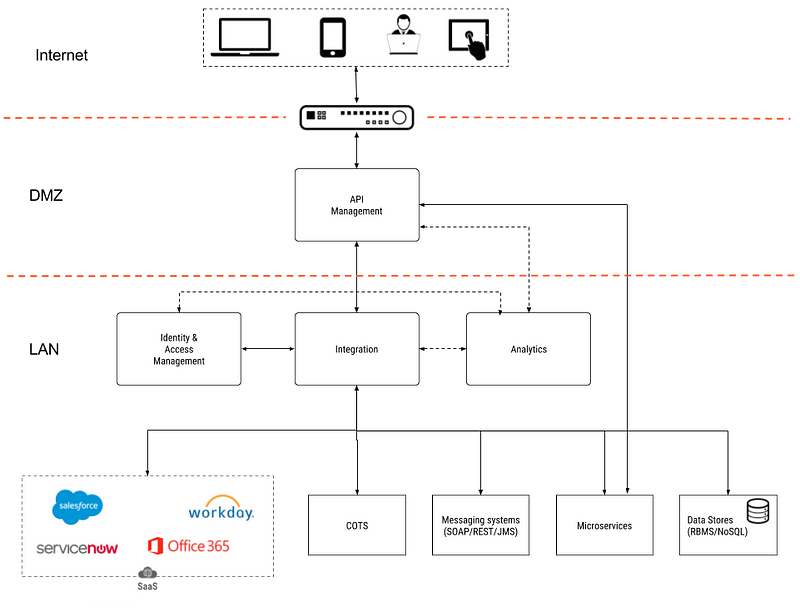Digital Transformation is as real as global warming. It is as real as Donal Trump becoming the US president. It is real, but you might not have taken it seriously. According to a latest survey done by Gartner, 42% of CEOs are taking actions to align their organizations with Digital transformation.
What is Digital Transformation?
DT (Digital Transformation) is that making your organizations assets (physical, intellectual) digitally accessible to fullfill your business requirements through engagement of technology. It is not only for Internet companies like Google, Facebook, Apple, Amazon or Microsoft. They have already transformed. But the challenge is for organizations which are not high tech. Think about Transportation, Logistics, Pharmaceuticals, Real Estate. These industries didn’t have much technology requirements in the past. But it is not the case anymore.
Consumer driven business
We have come through different technological advancements. At the Industrial age, machines were the main focus point. Then came the age of transportation and aviation where people focused about large aircrafts, automobiles, ships and international trade. With the invent of Personal Computer (PC), focus was shifted towards computing. Internet was born and information sharing has become the focus point. Then came the world of digital technology where people started controlling other people and objects through their mobile or hand held device. The world has come to the fingertips of the people. The advancement of digital technology allowed people to consume goods and services from their fingertips. Bricks and Mortar shops are no longer popular. Amazon, Ebay, Alibaba has changed the way people do shopping.
The power of the business has shifted from the producer to consumer. Consumers don’t care about the status quo or your history. What they care about is how easily your products/services can be accessed and how quickly you can deliver. They want to see your products from their home.
Early adopters of DT
There are some organizations which have started just 5 years back and now controlling the entire world through their technological capabilities. Some of them are
- AirBnb (Largest hospitality service without owning any property)
- Uber (Largest taxi service without owning any vehicle)
- Netflix (Largest media streaming company which does not produce any mdia)
- Alibaba
Transforming your business into a digital business
First things first! You need to first understand the value of digital transformation. It needs to come from top to bottom. Not the other way around. Value of a digital business needs to be well understood before thinking about any digital transformation. Just think about a sample organization called “MyPharma” which is a famous pharmacy chain. Let’s think this organization has 100s of branches acrsoss United States. CTO of this organization has decided that they need to come up with new services to their consumers so that consumers will not go away from them. He has identified following high level things which needs to be done to provide innovative services to their customer.
- Understand the customers who are coming to the pharmacy
- Interconnect all the pharmacies so that customers get a unified experience whenever they jumped into a “MyPharma” shop
- Integrate all the systems into one single platform so that services are provided through standard interfaces
- Expose their data (medicines, offers, reminders to customers) through mobile and web based applications
- Securely engage with premium customers and provide services which are customized for them
Reference architecture for DT
Once the requirements are clearly understood by the CTO, he evangelize this idea across senior leadership team through presentations and providing references about successful digital businesses. Somehow, he convince the senior leaders to take a shot at DT and gradually move their pharmacy business into a digital business. After scanning through all the available systems in their IT infrastructure, he is fascinated by how many different systems are squeezed into their system without even CTO is unaware of. He sees systems which are
- Commercial Off The Shelf (COTS),
- Web Services,
- Cloud Services,
- Data bases
He wants to
- integrate these systems with each other without going with point to point connections.
- Once these systems are integrated, he wants to expose these services to different stake holders like customers, other branches, vendors, partners, etc.
- Once the services are exposed, he wants to monitor their KPIs and do improvements based on them
- He wants to provide secured access to information since medical information is sensitive to people and their health
He comes up with a reference architecture which fullfills the above mentioned requirements as well as his business ambitions.
As depcited in the above figure, CTO of “MyPharma” has identified 4 main capabilities which are required to build a digital business.
- API Management — Managing how people interact with the digital services you offer
- Integration — Enablement of you desparate systems through a common platform without affecting any of the existing systems
- Identity and Access Management — Manage the users and their capabilities and avoid unauthorized access to data
- Analytics — Monitor and analyze your business activities and frequently provide feedback to improve the business
Once this architecture is identified and approved from the senior leaders, CTO of “MyPharma” needs to select a vendor based on following factors
- Completeness of the solution in terms of implementing the full DT
- Future vision of the vendor and how innovative are they
- Financial ROI
- Support for the products and quality of support
Finally, CTO comes up with a set of requirements in the face of RFI/RFP and contact vendors to showcase their capabilities. If required, vendors are called for onsite/offsite demo and then do the selection.
Happy DT !!!

Awesome,
ReplyDeleteThank you so much for sharing such an awesome blog...
application development and system integration services
thanks for this information . digital transformation services
ReplyDelete